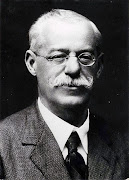por Ramiro Aznar Ballarín
Después de pasar las últimas semanas recorriendo las calles de Zuera y sumergido en la bibliografía sobre el andar en la ciudad, he visto necesario crear un índice de peatonalidad (aunque la traducción literal sería de "andabilidad") para cartografiar el "walkscape" del pueblo. Para lograr esto será esencial seleccionar los componentes adecuados en función de los objetivos del trabajo.
Se ha demostrado que el ambiente urbano y natural puede afectar directamente sobre el funcionamiento de ciertas actividades humanas [32]. De hecho, andar, es la actividad cotidiana más generalizada en el mundo adulto, y es que, de acuerdo con varios autores andar puede generar beneficios económicos, sociales, físicos y también mentales [3, 13, 16, 22, 23, 39]. Algunos trabajos han argumentado que existe una clara relación entre ciertas variables ambientales percibidas por el individuo y el proceso de andar [4, 9, 20], pero también variables objetivas de la escena urbana calculadas empíricamente [10, 21, 31]. En este sentido, científicos urbanos y urbanistas han creado el término "walkability" (la citada andabilidad), una medida de la idoneidad o potencial de un vecindario o ciudad para andar por él. Por tanto la andabilidad de una comunidad puede ser entendida como "la capacidad de su ambiente urbano y usos para mantener (o no) procesos peatonales como hacer ejercicio, acceder a zonas de recreo o servicios públicos, y ir andando al trabajo" [21: 113]. Como componentes de este índice se han sugerido multitud de parámetros presentes en nuestras calles y ciudades. Con la vista puesta en los objetivos del proyecto he dividido los encontrados en la numerosa bibliografía en tres categorías:
Percepciones y sentimientos
-Seguridad vial y personal, y temores [1, 2, 4, 7, 11, 16, 18, 31, 33].
-Disposición de las calles para la actividad [4, 9, 11, 12, 16, 31].
Diseño de la ciudad y características del barrio
- Estructura y conectividad del callejero [4, 5, 17, 22, 24, 26, 29, 31, 37].
- Diversidad de usos [4, 12, 14, 15, 16, 17, 21, 22, 27, 29, 31, 37].
- Densidad residencial [4, 15, 19, 21, 24, 26, 27, 29, 31].
- Forma y tamaño de las manzanas [12, 14, 18, 24, 26, 27, 37].
Características de las calles
-Continuidad peatonal [6, 7, 19, 24, 29, 31, 37].
-Características de las aceras [8, 14, 18, 29, 38].
-Topografía [8, 14, 30].
-Tráfico y aparcamientos [4, 14, 18, 19, 25, 27, 28, 29, 34, 35, 36].
El primer grupo de variables conforman la categoría relacionada con las percepciones humanas, sentimientos y preocupaciones de los ciudadanos sobre el medio urbano. Estos factores sociales que van desde la estética del barrio a otros aspectos como la complejidad o la transparencia del entramado de calles son mu difíciles de medir, pero sin embargo, son esenciales para el entendimiento del funcionamiento y vida de las calles de una villa o de una gran ciudad. En este trabajo estas variables se espera que surjan a través de las narrativas espaciales que puedan resaltar las organizaciones ciudadanas en los procesos de participación. El segundo y tercer grupo se centra en algo completamente diferente, los elementos físicos de la escena urbana. El primero está subdividido en dos secciones. La primera son las variables que definen el diseño del callejero urbano, tales como el número de intersecciones y fondos de saco, factores que se sabe que condicionan la disposición de caminar por un barrio. La segunda por otro lado, son factores que caracterizan la demografía y los usos de la comunidad. Aquí podemos encontrar parámetros tan importantes para fomentar el caminar de los residentes en sus vecindarios como la densidad poblacional. Aunque se conoce que tanto éste como el resto de factores anteriormente comentados son importantes a la hora determinar la idoneidad de un entorno urbano para el proceso de caminar, se ha decidido incidir en el siguiente grupo.
La calle Mayor es un buen ejemplo de calle con diversidad de usos (bancos, carnierías, panaderías, estancos...) donde la gente se mueve andando de un establecimiento a otro. // A good example of land-use mix street (with banks, butchery, bakeries, cigar stores...) can be found in Calle Mayor where the residents walk from one place to another [photo by Ramiro Aznar Ballarín].
Por último me dejo el grupo de variables más importantes e interesantes para los objetivos del blog y por tanto del trabajo, la categoría que agrupa los parámetros que caracterizan nuestras calles, y más concretamente la naturaleza de sus superficies. Desde las barreras físicas que impiden andar por las aceras hasta la dominancia de nuestros coches en el paisaje urbano son estos los factores que van a ser cartografiados. En las siguientes entradas intentaré describir las variables elegidas para el estudio, y la metodología que se empleará para analizarlas y por último representarlas. Esta representación cartográfica como ya se ha dicho en más de una ocasión aquí pretender enseñar un paisaje de posibilidades, las cuales deben ser rellenadas por el proceso de participación que se llevará a cabo más adelante.
by Ramiro Aznar Ballarín
After spending a few weeks wandering through the streets of Zuera and rambling through the literature of walking and pedestrian accessibility, I have realized that the best choice to map the walkability of Zuera's arteries is to create a walkability index. To do so is essential select the proper components according to the goals of our project.
It is argued that environments can influence physical activity behaviours directly [32]. Walking, in fact, is the most common adult physical activity behaviour, and according to several authors it presents economic, social, physical and mental benefits [3, 13, 16, 22, 23, 39]. Some studies have reported the associations between perceived environmental variables and walking [4, 9, 20], but also variables derived objectively from empirical data [10, 21, 31]. In this regard, scientists and urbanists have created the term "walkability" to define the sutability for walking of a particular city, neighborhood or community. Walkability of a community, therefore, "may be conceptualised as the extent to which characteristics of the urban environment and land use may or may not be conducive to residents in the area walking for either leisure, exercise or recreation, to access services, or to travel to work" [21: 113]. It has been identified lots of parameters of the built environment in order to assess the walkability. For the purpuse of this work I have divided them into three categories:
Human perceptions
-Physical safety, personal security and fears [1, 2, 4, 7, 11, 16, 18, 31, 33].
-Activity friendliness [4, 9, 11, 12, 16, 31].
City design and neighborhood characteristics
-Street network and connectivity [4, 5, 17, 22, 26, 24, 29, 31, 37].
-Land-use mix [4, 12, 14, 15, 16, 17, 21, 22, 27, 29, 31, 37].
-Residential density [4, 15, 19, 21, 24, 26, 27, 29, 31].
-Built form and block size [12, 14, 18, 24, 26, 27, 37].
Street characteristics
-Pedestrian continuity [6, 7, 19, 24, 29, 31, 37].
-Sidewalk properties [8, 14, 18, 29, 38].
-Topography [8, 14, 30].
-Parkings and traffic load [4, 14, 18, 19, 25, 27, 28, 29, 34, 35, 36].
-Physical safety, personal security and fears [1, 2, 4, 7, 11, 16, 18, 31, 33].
-Activity friendliness [4, 9, 11, 12, 16, 31].
City design and neighborhood characteristics
-Street network and connectivity [4, 5, 17, 22, 26, 24, 29, 31, 37].
-Land-use mix [4, 12, 14, 15, 16, 17, 21, 22, 27, 29, 31, 37].
-Residential density [4, 15, 19, 21, 24, 26, 27, 29, 31].
-Built form and block size [12, 14, 18, 24, 26, 27, 37].
Street characteristics
-Pedestrian continuity [6, 7, 19, 24, 29, 31, 37].
-Sidewalk properties [8, 14, 18, 29, 38].
-Topography [8, 14, 30].
-Parkings and traffic load [4, 14, 18, 19, 25, 27, 28, 29, 34, 35, 36].
The first group of variables are based on human perceptions, feelings and concerns. From aesthetics to transparency, these social factors are very difficult to measure but essential if the researcher attempts to understand how the streets of a town works. In the present work, it has been planned that these aspects can be emerged from spatial narratives during the participatory research. The second and third groups are more concerned on physical attributes of the urban environment. On the one hand, the former agreggates a serie of variables which define the street network structure. Concretely, it has been demonstrated that the number of intersections or cul-de-sacs are really important factors which affects the walkability of communities. On the other, the demographic and land-use characteristics of the neighborhoods like population density and land-use diversity and accessibility are urban components which determine walking. Despite being really important, it has been decided that the present work will not be involved in the analysis of this subgroup of variables.
Finally and more interesting for the purpuse of this blog, there is the peculiar nature of the street surfaces. From the physical barriers for walking to the play of cars on the street game, these are the factors that I have chosen to map and in the following posts I will try to describe the selected variables as well as the methodology to measure and represent them. The resulting cartography should show a landscape of potentials which the participatory process will be able to fulfill.
[1] Appleyard, M. 2005. Livable streets for school children. NCBW Forum Article 3-7-05: 1-15.
[2] Bayley M., Curtis B., Lupton K. & Wright C. 2004. Vehicle aesthetics and their impact on the pedestrian environment. Transportation Research 9: 437-450.
[3] Berke E.M., Gottlieb L.M., Moudon A.V., Larson E.B. 2007. Protective Association Between Neighborhood Walkability and Depression in Older Men. JAGS 55(4): 526-533.
[4] Cerin E., Macfarlane D.J., Ko H. & Chan K.A. 2007. Measuring perceived neighbourhood walkability in Hong Kong. Medicine and Science in Sports & Exercise 24(3): 209-217.
[5] Chin G.K., Niel K.P., Giles-corti B., Knuiman M. 2008. Accessibility and connectivity in physical activity studies : The impact of missing pedestrian data. Preventive Medicine 46: 41-45.
[6] Coerner B.I. 1998. Cities that work. US News & World Report 124(22): 26-36.
[7] Dumbaugh E. 2005. Safe Streets, Livable Streets. JAPA 71(3): 283-300.
[8] Emery J., Crump, C. & Bors, P. 2003. Reliability and Validity of Two Instruments Suitability of Sidewalks and Roads. American Journal of Health Promotion 18(1): 38-47.
[9] Ewing R., Handy S., Brownson R.C., Clemente O. & Winston E. 2006. Identifying and Measuring Urban Design Qualities Related to Walkability. Journal of Physical Activity and Health 3(1): 223-239.
[10] Frank L. D., Schmid T. L., Sallis J. F., Chapman J. & Saelens B.E. 2005. Linking objectively measured physical activity with objectively measured urban form. American Journal of Preventive Medicine 28(2): 117-125.
[11] Gauvin L., et al. 2005. From Walkability to Active Living Potential. A Ecometric Study. American Journal of Preventive Medicine 28: 126-133.
[12] Gehl J., Kaefer L.J. & Reigstad S. 2006. Close encounters with buildings. Urban Design International 11: 29-47.
[13] Greenberg M.R. & Renne J. 2005. Where Does Walkability Matter the Most ? An Environmental Justice Interpretation of New Jersey Data. New York 82(1): 90-100.
[14] Handy S.L. & Clifton K.J. 2001. Evaluating Neighborhood Accessibility: Possibilities and Practicalities. Journal of Transportation and Statistics 4(2/3): 67-78.
[15] Hess, P.M. et al. 1999.Site design and pedestrial travel. Transportation Research Record 1674 Paper No. 99-0424: 9-19.
[16] Jacobs, J. 1961. The Death and Life of Great American Cities. Random House, 624 p.
[17] Krizek K.J. & Johnson P.J. 2005. Proximity to Trails and Cycling and Walking. JAPA 72(1): 34-42.
[18] Landis B.W., Ottenberg R.M., Mcleod D.S. & Guttenplan M. 2007. Modeling the roadside walking environment: a pedestrian level of service. TRB Paper No. 01-0511.
[19] Lee C. & Moudon A.V. 2006. Correlates of Walking for Transportation or Recreation Purposes. Metro. Journal of Physical Activity and Health 3(1):77-98.
[20] Leslie E., Saelens B., Frank L., et al. 2005. Residents’ perceptions of walkability attributes in objectively different neighbourhoods: a pilot study. Health and Place: 11: 227-236.
[21] Leslie E., Coffee N., Frank L., et al. 2007. Walkability of local communities: Using geographic information systems to objectively assess relevant environmental attributes. Health & Place 13: 111-122.
[22] Leyden K.M. 2003. Social Capital and the Built Environment: The Importance of Walkable Neighborhoods. American Journal of Public Health 93(9):1546-1551.
[23] Litman T.A. 2009. Economic Value of Walkability. Transportation Research Record 10(1): 3-11.
[24] Lovasi G.S., Moudon A.V., Pearson A.L., et al. 2008. Using built environment characteristics to predict walking for exercise. International Journal of Health Geographics 13: 1-13.
[25] Manville, M. & Shoup, M. 2004. People, parking and cities. Access 25, pp. 2-8.
[26] Mcdonald N.C. 2007. Travel and the social environment: Evidence from Alameda County, California. Transportation Research 12: 53-63.
[27] Moudon A.V., Lee C., Cheadle A.D., et al. 2006. Operational Definitions of Walkable Neighborhood: Theoretical and Empirical Insights. Journal of Physical Activity and Health 3(1): 99-117.
[28] Mukhika V. & Shoup D. 2006. Quantity versus quality in off-street parking requirements. JAPA 72(3): 296-308.
[29] Rodríguez D.A., Brisson E.M. & Estupiñán N. 2009. The relationship between segment-level built environment attributes and pedestrian activity around Bogota’s BRT stations. Transportation Research Part D. 14(7): 470-478.
[30] Ross CE. 2000. Walking, exercising, and smoking: does neighborhood. Social Science & Medicine 51: 265-274.[31] Saelens B.E. & Handy S.L. 2008. Built environment correlates of walking: a review. Med Sci Sports Exerc. 40(7): 550-566.
[32] Sallis J.F. & Owen, N. 2002. Ecological models of health behaviour. In: Glanz, K., Lewis, F.M., Rimer, B.K. (Eds.), Health Behaviour and Health Education: Theory, Research, and Practice, third ed. Jossey Bass, San Francisco, pp. 462–484.
[33] Schneider R.J., Ryznar R.M. & Khattak A.J. 2004. An accident waiting to happen: a spatial approach to proactive pedestrian planning. Prevention 36: 193-211.
[34] Shoup D.C. 1995. An opportunity to reduce minimum parking requirements. JAPA 61(1): 14-28.
[34] Shoup D.C. 1995. An opportunity to reduce minimum parking requirements. JAPA 61(1): 14-28.
[35] Shoup D.C. 1999. The Trouble With Minimum Parking Requirements.Transport Policy Part A 33: 549-574.
[36] Shoup, D.C. 2003. "Truth in Transportation Planning," Journal of Transportation and Statistics 6(1):1-16.
[37] Southworth I.M. 1997. Walkable Suburbs?: An Evaluation of Neotraditional Communities at the Urban Edge. JAPA 63(11): 28-44.
[36] Shoup, D.C. 2003. "Truth in Transportation Planning," Journal of Transportation and Statistics 6(1):1-16.
[37] Southworth I.M. 1997. Walkable Suburbs?: An Evaluation of Neotraditional Communities at the Urban Edge. JAPA 63(11): 28-44.
[38] Sydnor T.D., Gamstetter D. & Nichols J., et al. 2000. Trees are not the root of sidewalk problems. Journal of Arboriculture 26(1): 20-29.
[39] Zhu X. & Lee C. 2008. Walkability and Safety Around Elementary Schools Economic and Ethnic Disparities. American Journal of Preventive Medicine 34(4): 282-290.















0 comments :: la importancia del paisaje urbano en el caminar // the importance of the urban environment for walking
Post a Comment